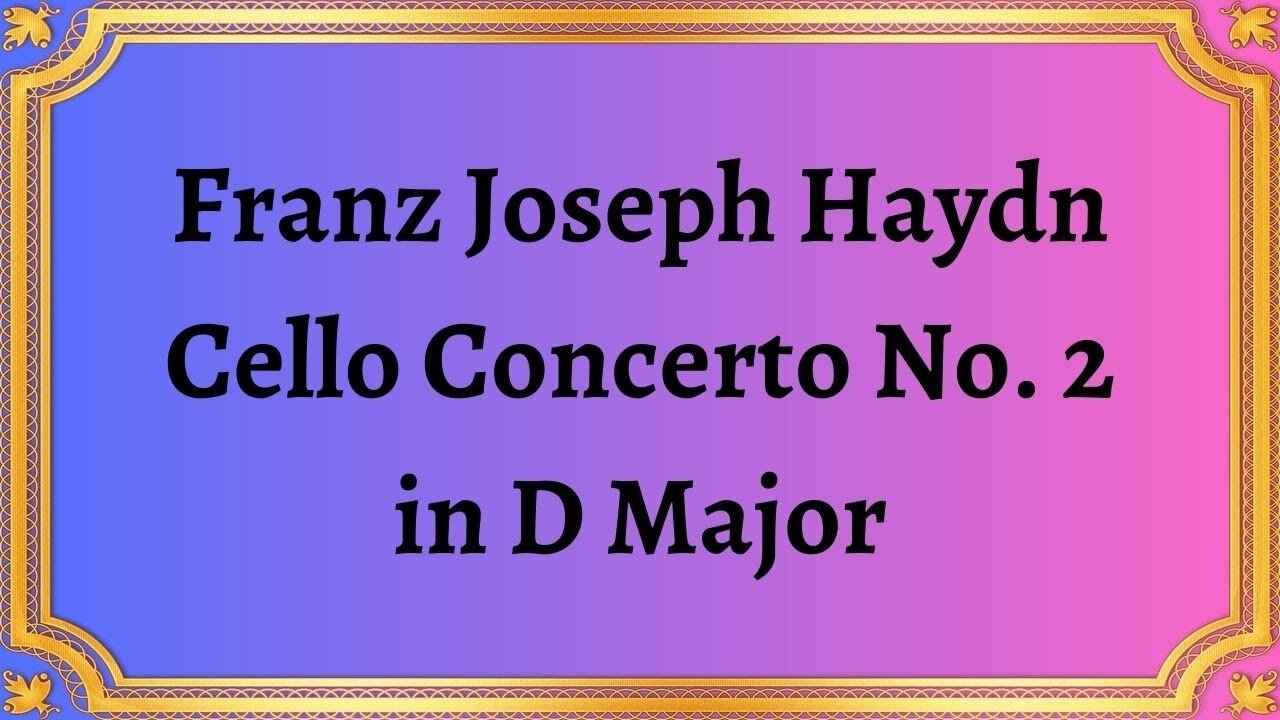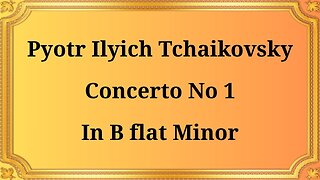Premium Only Content

Franz Joseph Haydn Cello Concerto No. 2 in D Major
#Haydn #CelloConcerto #DMajor #ClassicalMusic #ClassicalPeriod #BaroqueMusic #StringInstruments #MusicComposition #MusicalAnalysis #MusicalHistory #ConcertPerformance #Soloist #Orchestra #MusicAppreciation #MusicEducation #MusicHistory #Musicology #PerformingArts #classicalconcerts
Franz Joseph Haydn's Cello Concerto No. 2 in D Major is a beautiful example of classical music, composed in 1783 for a solo cello and a full orchestra. The work is known for its creative interplay between the soloist and the orchestral ensemble and showcases the composer's technical mastery of classical music forms.
The Cello Concerto No. 2 in D Major is a three-movement work. The first movement, Allegro moderato, is an upbeat and playful introduction. It begins with the full orchestra, followed by the solo cello's entrance, and sets the overall tone and mood for the entire piece.
The second movement, Adagio, is a slow lyrical melody, with the solo cello playing an emotive and delicate melody. This movement enjoys a calm and contemplative atmosphere with a sense of poignancy and introspection to the music that is classic to the work of Haydn.
The third and final movement, Rondo, Allegro, is a complex, fast-paced, and vibrant piece. The cello opens with a lively melody, and the full orchestra soon joins in, creating an energetic and dynamic exchange between soloist and orchestra. This movement also features numerous solo spots for the cellist to demonstrate their virtuosity and excellent musical capabilities through a wide range of bowing techniques, harmonics, and complex rhythm patterns.
The Cello Concerto No. 2 in D Major was groundbreaking for the time it was composed, and it set new standards for cello concertos, particularly through its technicality, the use of innovative rhythms, and Haydn's signature handling of tonality and musical structure. This musical composition is a testament to Haydn's creativity and musical genius, as well as exemplifies the Classical Era's development period in music.
In conclusion, Franz Joseph Haydn's Cello Concerto No. 2 in D Major is a brilliant example of classical music, capturing a wide range of emotions and exhibiting both technical and melodic prowess. It is an enduring masterpiece of classical music, showcasing the cello's beautiful range of sound. The concerto remains a cornerstone for cellists and classical musicians worldwide and a cherished classic acknowledged by music listeners across various generations.
You have the opportunity to support the channel https://destream.net/live/RadSiarAl/donate
-
 31:06
31:06
Classical music_Music Inspiration
23 days agoPyotr Ilyich Tchaikovsky Piano Concerto No. 1 in B-flat minor
541 -
 8:19
8:19
MattMorseTV
9 hours ago $0.26 earnedTrump is ACTUALLY DOING IT.
21.5K33 -

ZWOGs
11 hours ago🔴LIVE IN 1440p! - Tarkov w/ Casey & crgoodw1n, Kingdom Come Deliverance, & More - Come Hang Out!
18K5 -

We Like Shooting
15 hours ago $0.03 earnedWe Like Shooting 625 (Gun Podcast)
13K1 -
 1:45:02
1:45:02
Glenn Greenwald
6 hours agoIsrael Slaughters More Journalists, Hiding War Crimes; Trump's Unconstitutional Flag Burning Ban; Glenn Takes Your Questions | SYSTEM UPDATE #504
113K129 -
 1:29:31
1:29:31
Killerperk
3 hours ago $0.36 earnedRoad to BF6. Come hang out #regiment #bf6
19.8K2 -
 LIVE
LIVE
Jokeuhl Gaming and Chat
4 hours agoDARKTIDE - Warhammer 40k w/ Nubes Bloobs and AoA
48 watching -
 LIVE
LIVE
Cripiechuccles
5 hours ago😁💚💙MOTA MONDAY WITH CRIPIE💚💙 👌SMOKING, GAMING & WATCHING FLICKS!:😁
39 watching -
 36:11
36:11
Stephen Gardner
4 hours ago🔥'Burn ALL TRUMP FLAGS’ says Tim Walz + Democrat CAUGHT rigging own election!
20.1K12 -
 10:10
10:10
robbijan
1 day agoHollywood’s Hidden Messages: Predictive Programming & What’s Next
15.7K18